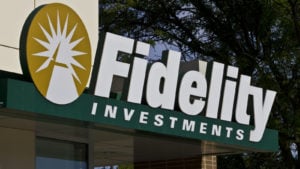Although many investors have drifted towards unit trust-structured exchange-traded funds (ETFs) in recent years, mutual funds remain highly lucrative and underappreciated.
Sure, mutual funds may not have the cost and settlement tax benefits of ETFs. However, they offer stringent regulatory oversight paired with reliable end-of-day settlement. Moreover, numerous open-ended mutual funds have sought-after themes that add value to diversified investment portfolios.
Considering the aforementioned, I dialed in on the mutual fund space to provide my readers with solid options. I started by looking at strong buy-rated mutual funds and picked out three best-in-class assets. What did I base my analysis on? In short, I looked at factors such as fund infrastructure and suitability to the economic climate. Additionally, I phased in output variables like dividend feasibility and valuations.
Here are three strong buy-rated mutual funds to buy in April 2024.
Fidelity® Government Money Market Fund (SPAXX)

As its name implies, the Fidelity® Government Money Market Fund (MUTF:SPAXX) is a money market vehicle that provides investors with exposure to cash instruments.
The Fidelity® Government Money Market Fund’s weighted average maturity and seven-day yield stand at 35 days and 4.97%, respectively, conveying its short-term characteristics. Furthermore, SPAXX’s gross expense ratio of 0.42% is admirable, given the high degree of active management embedded in the fund’s ecosystem.
Money market funds are highly lucrative for now. Sure, interest rates could pivot later this year, but U.S. inflation settled at 3.5% for March, suggesting a rate pivot might be on hold. This provides SPAXX with additional roam to run into. Moreover, the uncertain economic environment lends shorter-duration bond funds such as SPAXX the upper hand.
Market Screener suggests SPAXX is a strong buy mutual fund as it ranks SPAXX as the fifth best U.S. mutual fund. I concur and think that the Fidelity® Government Money Market Fund is suitable for investors seeking capital preservation and/or sustainable income for the remainder of the year.
Huber Select Large Cap Value Fund Inv (HULIX)

The Huber Select Large Cap Value Fund (MUTF:HULIX) invests approximately 80% of its funds in large-cap U.S. stock, adhering to the Bloomberg US 1000 Value Index’s criteria.
As a rules-based vehicle, HULIX’s objectives align with value investing and dividend-seeking. I’m not going to lie; there’s nothing novel about this fund’s strategy. However, I back it to the tilt as the shaky economic environment gives rise to value and dividend investing. Additionally, HULIX mutual fund’s 20% room for active management allows it to add asymmetrical value, which most ETFs won’t provide you with.
The Huber Select Large Cap Value Fund’s net expense ratio for individual investors is 1.39%, which isn’t ideal. However, HULIX has achieved an annualized investor class return of 8.34% since inception, justifying its expenses.
This fund won’t change your life, but it can anchor your portfolio by delivering returns throughout the economic cycle. The Street recently named HULIX as one of its top mutual fund picks, which I absolutely agree with!
Symmetry Panoramic Alternatives (SPATX)

Did you know you can invest in hedge funds with as little as $1,000? Well, if you didn’t, then now you know.
The Symmetry Panoramic Alternatives (MUTF:SPATX) fund provides investors with access to multistrategy hedge funds via a pooled investment vehicle. This liquid alternative has delivered annualized returns of 7% in the past five years, outperforming other multistrategy funds by 290 basis points. Even though its returns sound mild, remember that hedge funds bombed out during the pandemic lockdowns. As such, SPATX’s future returns will likely differ considerably.
Furthermore, SPATX has a trailing yield of 6%, illustrating its dividend benefits. Although SPATX’s expense ratio of 2.05% is high, this vehicle’s return and diversification prospects add allure. Moreover, SPATX is a no-load fund, meaning its existing investors are not liable for future investors’ commission and sales charges.
In essence, we are looking at a diversification play here with a five-star rating from Morningstar.
On the date of publication, Steve Booyens did not hold (either directly or indirectly) any positions in the securities mentioned in this article. The opinions expressed in this article are those of the writer, subject to the InvestorPlace.com Publishing Guidelines.

